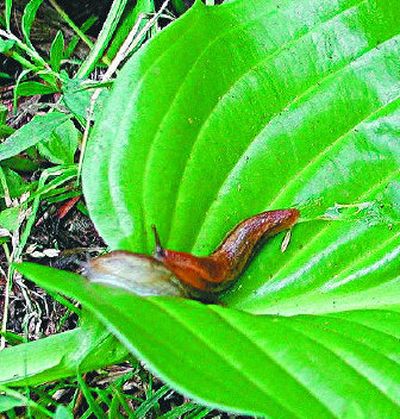Plan for garden wildlife

Want to get the jump on bugs and slugs this year? What about creating some free entertainment out in the garden any time you want it? Good environmental stewardship starts in our own backyards and includes the wildlife with which we share our gardens.
As you clean up this spring, plan for the food, water, shelter and space needs of wildlife that will make your yard attractive enough for wildlife to set up housekeeping.
Choice property
As you prune and trim, put some of your trimmings in a pile in an out-of-the-way corner of the yard. Got rocks? Make a loose pile of them in another corner of the yard. A pile of either rocks or brush about 3 or 4 feet square will provide small birds and animals a place to hide and weatherproof nesting cavities.
If you are planting shrubs and trees, plant a mix of low, medium and tall plants to give wildlife layers of vegetation to move around in. Different birds will nest at different heights off the ground. The more choices they have, the more who will stay around.
Water well
Look for ways to keep water available. While formal birdbaths are fine, that drippy faucet with a flat container under it is just right for small animals and birds. Slightly muddy areas draw butterflies. Put out shallow, flat containers where sprinklers can fill them regularly. Dedicate a drip head to fill a depression lined with concrete near some shrubs and watch the parade of small animals and birds that stop by. Be sure to clean water containers frequently and leave space around them so cats can’t surprise the animals.
Going to seed
Provide a variety of plants that produce seed or fruit at different times of the year, including winter. Let plants go to seed. Leave flower stalks standing in the garden at the end of the season. Plant nectar-producing plants for hummingbirds. Plan for several birdfeeders that hold a different type of seed (black oil sunflower and thistle are favorites) or nectar for hummingbirds. Be sure to have hummingbird feeders out by the middle of April, when the birds return. Make hummingbird nectar by mixing one part table sugar with four parts water, nothing else.
Be bug friendly
Resist using pesticides on bugs. There are some great predator bugs out there that can knock an aphid problem down quickly if they are given a chance to do so. Pesticides will kill them, too. If you have to knock bugs off roses, use a hard stream of water instead.
Encourage your neighborhood to leave contiguous corridors of trees and shrubs so wildlife can move around and have enough space to breed and feed.